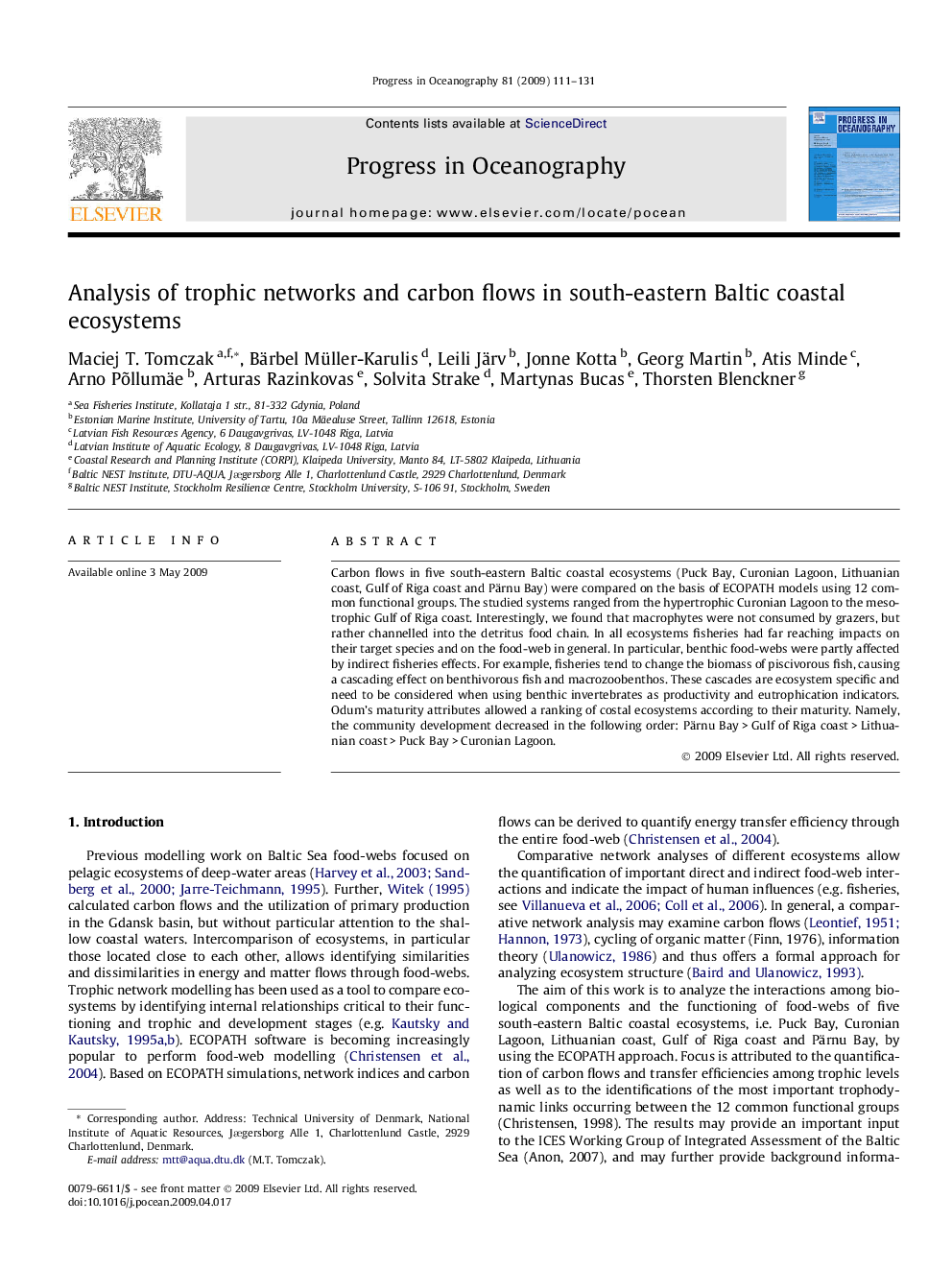| Article ID | Journal | Published Year | Pages | File Type |
|---|---|---|---|---|
| 4553602 | Progress in Oceanography | 2009 | 21 Pages |
Carbon flows in five south-eastern Baltic coastal ecosystems (Puck Bay, Curonian Lagoon, Lithuanian coast, Gulf of Riga coast and Pärnu Bay) were compared on the basis of ECOPATH models using 12 common functional groups. The studied systems ranged from the hypertrophic Curonian Lagoon to the mesotrophic Gulf of Riga coast. Interestingly, we found that macrophytes were not consumed by grazers, but rather channelled into the detritus food chain. In all ecosystems fisheries had far reaching impacts on their target species and on the food-web in general. In particular, benthic food-webs were partly affected by indirect fisheries effects. For example, fisheries tend to change the biomass of piscivorous fish, causing a cascading effect on benthivorous fish and macrozoobenthos. These cascades are ecosystem specific and need to be considered when using benthic invertebrates as productivity and eutrophication indicators. Odum’s maturity attributes allowed a ranking of costal ecosystems according to their maturity. Namely, the community development decreased in the following order: Pärnu Bay > Gulf of Riga coast > Lithuanian coast > Puck Bay > Curonian Lagoon.
